About the Book
With beautiful, scientifically accurate illustrations, this fascinating story teaches children about the many fish, crustaceans, marine mammals, and micro-organisms that live in and feed off the eelgrass meadows of the north Pacific coastal region.
“Recommended for school and public libraries regardless of their proximity to the west coast. Although works of fiction, the books contain a wealth of accessible facts.”—Resource Links
“A major theme that emerges is the need to respect and care for the ocean environment and to understand the harmony among its inhabitants. These appealing, fact-rich books go a long way to enhancing that understanding for young readers. Highly recommended.”—CM: Canadian Review of Materials
Sam and Crystal’s coastal adventure continues as brother and sister dive deeper—literally—into the marine habitats of Eagle Cove, home of Aunt Kate and Uncle Charlie. In their third adventure, the kids learn about one of the most ecologically important ecosystems on the west coast: the eelgrass meadow. This rich habitat provides food and shelter to countless marine critters—from tiny micro-organisms to juvenile fish, and is the basis of a gigantic food web that supports herring, salmon, black bears, humpback whales and many other species. Ada, an Indigenous woman from nearby Salmon Bay Village, tells the children about her people’s knowledge of land and sea, complementing Aunt Kate’s Western scientific teachings and reinforcing the importance of respecting nature. Combining an entertaining story with gorgeous imagery and the author’s scientific background and extensive work with Indigenous Elders and educators, Explore the Eelgrass Meadow with Sam and Crystal brings the coastline to life for children ages eight and up.
About the Author(s)
Karen Gillmore has been an artist since she could hold crayons. In addition to being a children’s book illustrator—most notably of the Sam and Crystal series—she also draws and writes comics and illustrates graphic novels.
Gloria Snively is a professor emeritus of science, environmental, and marine education in the Faculty of Education, University of Victoria; a former classroom teacher of primary and junior secondary grades; and a founding member of the Northwest Association of Marine Educators. In addition to the Sam and Crystal series, she is the author of the classic bestselling field guide Exploring the Seashore in British Columbia, Washington, and Oregon and (with Wanosta'a7 Lorna Williams) Knowing Home: Braiding Indigenous Science with Western Science.
Reviews
"As in the previous books, the overall theme in Explore the Eelgrass Meadow with Sam and Crystal concerns the need to respect, care for and live in harmony with this diverse ecosystem. ... This is both an attractive and important series that should appeal to a wide readership. Highly Recommended."
—CM: Canadian Review of Materials
"Although a fictional story, this book contains a wealth of accessible marine ecology facts combined with scientifically accurate drawings. [...] As the text is very detailed, careful reading may be needed to understand the depth of scientific information."
—BC Books for BC Schools
"Dr. Snively captures the wonder and excitement of the rich eelgrass meadow and associated ocean ecosystems. Seen through the eyes of two delightful, curious children, the biological wonders of this habitat are interpreted by a marine biologist, a fisherman uncle, a First Nations Elder, and even a small, wise, and perceptive fish. Beautifully illustrated by Karen Gillmore, scientifically accurate, and fun to read, this story of the ocean coast and all its relationships will captivate children and adults alike."
—Dr. Nancy Turner, ethnobotanist
"A special story that will whet young people's curiosity about the very special ecosystem of native eelgrass in the Pacific Northwest."
—Nikki Wright, Executive Director, SeaChange Marine Conservation Society
"Gloria Snively and Karen Gillmore do it again, bringing fascinating, detailed information about eelgrass meadows and the mysteries and value of our oceans to youth of all ages. Respect, equality, sustainable use, and conservation are all wrapped up in the words and pictures of the working west coast."
—Dr. Joachim Carolsfeld, World Fisheries Trust

